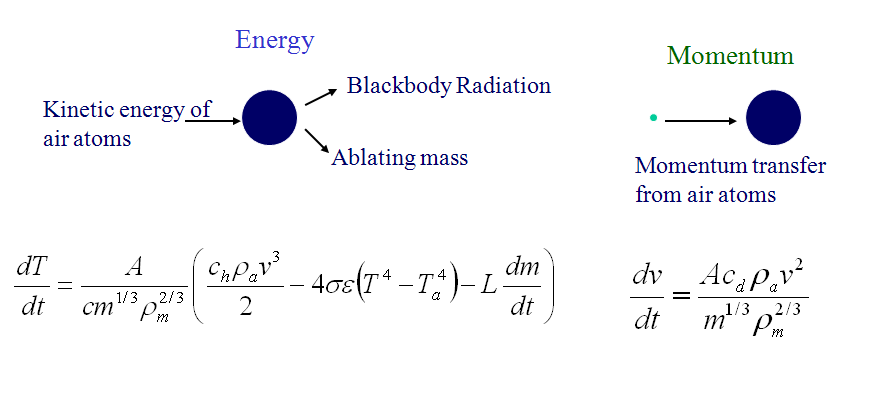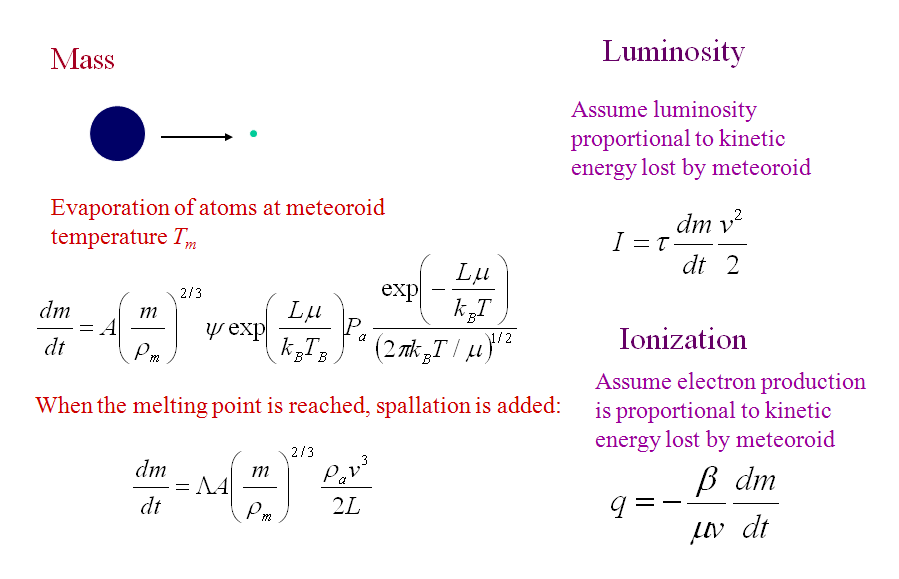Meteor Entry Modelling
Details
An important tool for interpretation of all forms of meteor observation are numerical entry models. The detailed physics of what happens during hypervelocity impact of a meteoroid with the atmosphere is a major topic of study with implications in many fields, such as aeronomy, astrobiology and impact cratering. It is also an exceedingly complex topic involving hypersonic airflow, plasma physics, fragmentation dynamics, chemistry, non-equilibrium thermodynamics, radiative processes and materials science.
In its simplest form, entry modeling involves understanding the interaction of air molecules with a meteoroid under varying flow conditions and quantifying the atmospheric and meteoroid response to this interaction. For single body ablation modeling, energy and momentum considerations lead to:

Considering mass and light production we can write:

This elementary physical approach to the problem ignores fragmentation and is often called classical single body theory.
We have developed a model which uses this generic approach but includes explicitly thermal fragmentation in the form of a distribution of grains held together by a volatile glue. Details of the model are given in Campbell and Koschny (2004).
Additionally, the group has used a variety of other models for interpretation of meteor observations including a Gross Fragmentation model (cf. Ceplecha et al 1993), a comprehesive fragmentaion model with collective and non-collective wake behaviour including meteoroid porosity (cf. ReVelle, 2005) and are developing a direct simulation Monte Carlo model based on rarefied fluid flow, an approach which has previously been applied to Leonid meteoroid entry (Boyd, 2000).



